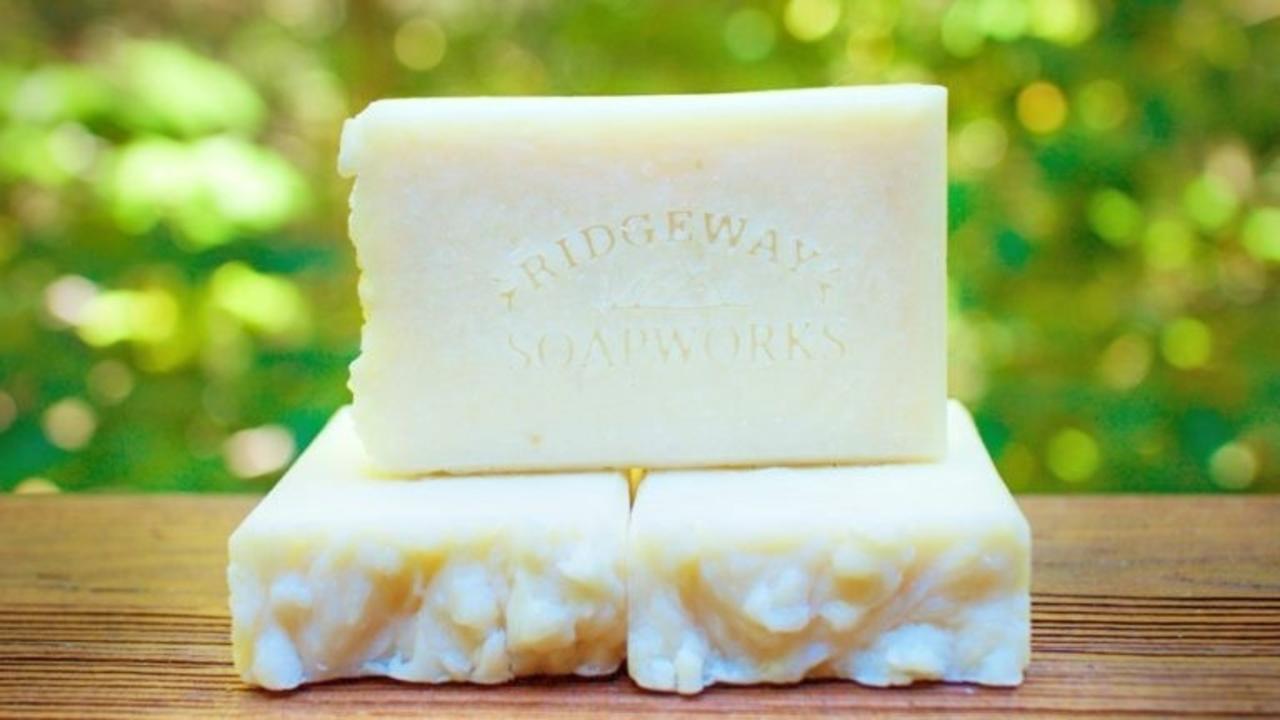Is Creamy Lightly Colored Hot Process Goat's Milk Soap Possible?

This post comes to you courtesy of Molly.
Think goat's milk is just for cold process soapmaking? Think again! Today, we're diving into how to make a creamy hot process goat's milk soap!
I adore goat's milk as an ingredient in soaps: the sugar adds wonderful bubbles to the lather and the cream is a skin-softening moisturizer. Goat's milk also adds a ton of label appeal in some markets.
When I first started making goat's milk soap, I was using the cold process method of soapmaking, which means I often froze the goat's milk in cubes and added the lye slowly to the frozen goat's milk. (Similar to how Veronica rocked it in this Goat’s Milk, Honey and Avocado Oil Soap Tutorial!)
One of the reasons I ended up switching to hot process soapmaking is that cold process soapmaking with this method is not terribly efficient! (I love efficiency!)

With any soap making process (whether it's cold process or hot process or somewhere in between), you can add your lye to your goat's milk frozen to prevent scorching. However, with hot process soapmaking, the high temperatures that the hot process soap goes through while cooking will cause the sugars to caramelize and turn the hot process goat's milk soap a tan color.
Does it have to be this way? Nope! I love to color and swirl my handmade soaps, so a tan-colored soap base does not work for me. As a result, in my hot process goats milk soaps, I hold back some of my water and add that reserved liquid amount in the form of goat's milk after the soap has cooled to a low enough temp that the sugars will not caramelize (about 180° F/82° C).
One of the benefits of adding the goat's milk after the cook is that all of the nutrients, fats and sugars remain in their natural form as they do not go through saponification. So, you can use a smaller amount of goat's milk to get those wonderful skin-loving benefits. I like to cook with 85% of my water, and add the remaining 15% after the cook. There are a lot of soapers who only hold back 5% or 10% and still feel that they get those benefits!
I am a curious person, and for this article, I wanted to create a soap where 100% of the liquid was goat milk, yet the soap was a creamy, milky color. And of course I wanted to make this soap hot process and did not want to deal with freezing the lye water. Sounds interesting, don't ya think?
It was! And it came out great. Here is my soap made with goat milk as 100% of the liquid (I soaped with a 27% lye solution.):
 Creamy Lightly Colored Hot Process Goat's Milk Soap!
Creamy Lightly Colored Hot Process Goat's Milk Soap!
The Hot Process Goat's Milk Soap Experiment
In my experiment, I used a combination of fresh goat milk, along with powdered goat milk. For my experiment, I needed 14.0 ounces of liquid. I split that into 11.2 ounces of water for the cook, and reserved the remaining 2.8 ounces as goat's milk with 1.4 ounces of goat's milk powder (the amount needed to turn the 11.2 ounces of water into goat milk).
You can use use any soap recipe you like if you want to try this yourself! I used a combination of oils that I am fond of, because they generally produce a hard long, lasting bars (tallow, lard, sunflower, castor, rice bran and shea butter as superfat).
As usual, I cooked my soap, and then added my combination of goat's milk and goat's milk powder after the hot process soap was done cooking.
 Cooked hot process soap in the pot!
Cooked hot process soap in the pot!
Additionally, I added one tablespoon of kaolin clay and colloidal oatmeal to my slurry of goat's milk, powdered goat's milk, sodium lactate, and yogurt. Even though I made sure all of the additives were well blended, I used a mesh strainer to filter the slurry while adding it to the soap batter.
 Using a mesh strainer when adding anything to cooked hot process soap is always a good idea, just in case!
Using a mesh strainer when adding anything to cooked hot process soap is always a good idea, just in case!
For this hot process goat's milk soap experiment, I opted for an unscented and uncolored soap. I really wanted to see what the final color would be. Sometimes a simple, unscented soap is wonderful!
 Hot process goat's milk soap in the mold!
Hot process goat's milk soap in the mold!
My conclusions? After testing the hot process goat's milk soap, it is as great as my other hot process goats milk soaps made with just a small amount of goat's milk alone. Honestly, I don't think the added goat's milk powder was necessary!
 Creamy Lightly Colored Hot Process Goat's Milk Soap
Creamy Lightly Colored Hot Process Goat's Milk Soap
Though, it was interesting to see the impact of goat's milk powder as an additive. If you don't have access to fresh goat's milk, using the powder form will give you some of those same benefits, if you would like to test out this wonderful ingredient.
Want to see how fresh goat's milk and powdered goat's milk performs side by side? Check out the Lather Lover's additive testing swap results to see these additives in action and many others!
For more information about how I hot process my soap, check out my other posts on hot process soapmaking!
Want to snag weekly advice on building a successful soap biz directly in your inbox?
Of course you do! Sign up for our newsletter below for more tips and tricks to make bank in your biz.

